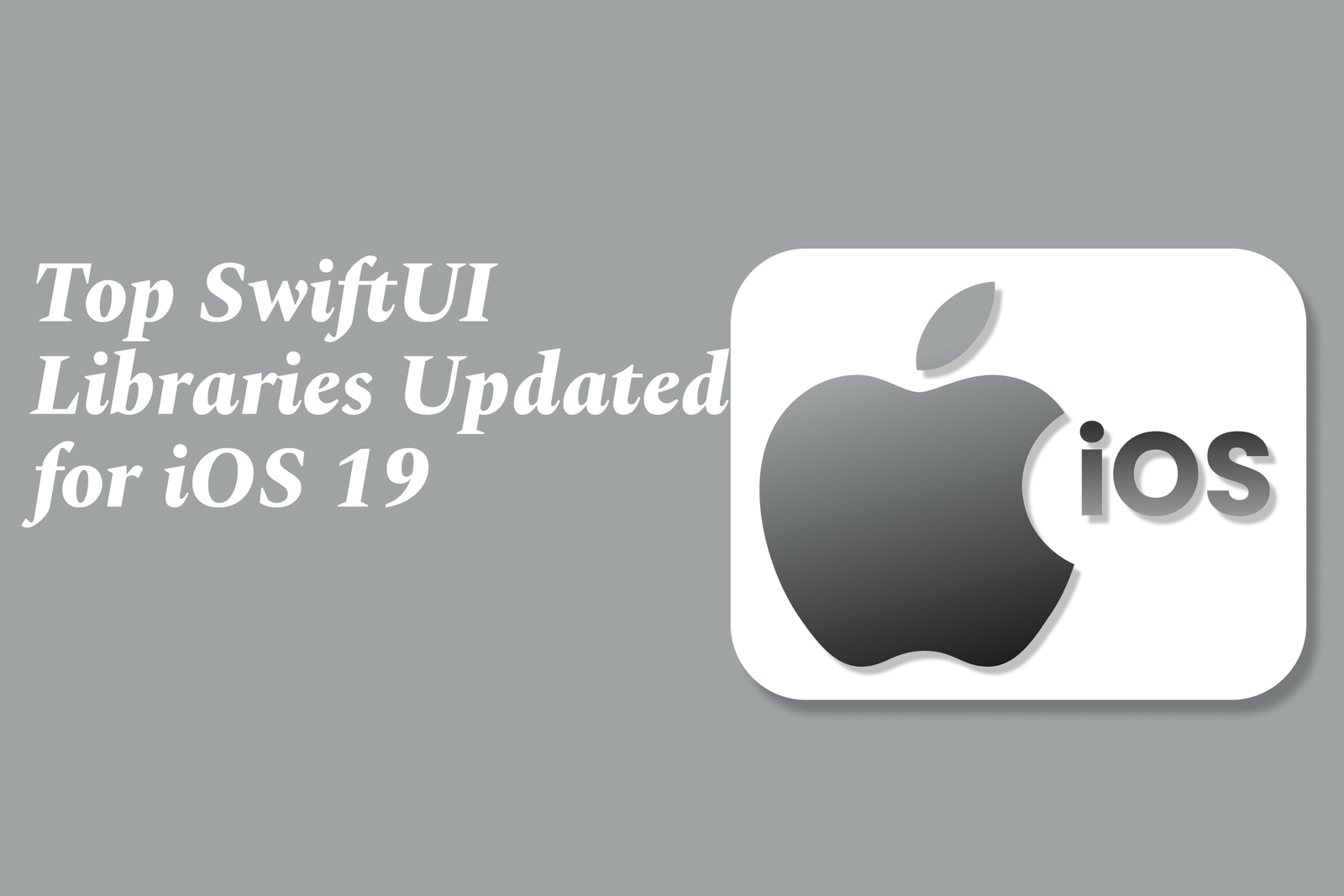Top SwiftUI Libraries Updated for iOS 19
Top SwiftUI libraries updated for iOS 19 offer enhanced UI components, improved state management with the new @Observable macro, and better integration with latest APIs. They help developers build modern, efficient apps while leveraging iOS 19’s new SwiftUI capabilities.
Top SwiftUI Libraries Updated for iOS 19
1 ) Introduction to SwiftUI Libraries and iOS 19 Updates
With the release of iOS 19, several popular SwiftUI libraries have been updated to leverage the latest features and APIs. These libraries help developers build more efficient, innovative, and maintainable user interfaces using SwiftUI, Apple's declarative UI framework.
2 ) ObservableObject vs. @Observable Macro in SwiftUI
Traditional SwiftUI state management utilizes the `ObservableObject` protocol, supporting iOS 16 and later.
The new `@Observable` macro introduced in iOS 19 simplifies and streamlines observation but requires raising the deployment target to iOS 17 or above.
Developers must weigh the benefits of enhanced syntax and features against the reduced device support when choosing between these approaches.
3 ) Top SwiftUI Libraries Enhanced for iOS 19
Several SwiftUI libraries have received important updates to align with iOS 19 capabilities:
a) SlideOverCard
Provides a customizable card view ideal for quick interactions like Apple Pay or QR code scanning.
Updated to integrate better with the latest payment and camera APIs introduced in iOS 19.
b) Other Popular SwiftUI Libraries
Libraries offering new UI controls, animations, and data handling utilities have been refreshed to support SwiftUI improvements in iOS 19, including enhanced accessibility and performance optimizations.
4 ) Benefits of Using Updated SwiftUI Libraries
Faster Development: Pre built and updated UI components reduce the need to create from scratch.
Consistency: Updated libraries maintain consistent visual styles aligned with iOS 19 design guidelines.
Modern Features: Access to cutting edge Swift and SwiftUI features such as improved state management and concurrency.
Community Support: Active maintenance from open source communities ensures bugs are fixed and new iOS 19 APIs are integrated promptly.
5 ) Considerations for Developers
Evaluate the target audience’s iOS version adoption before upgrading dependencies to use new macros or library versions.
Test existing UI workflows to ensure compatibility with updated behaviors introduced in iOS 19.
Follow library maintainers’ guidelines for migration to take full advantage of improvements and avoid deprecated patterns.
Conclusion
Updating SwiftUI libraries for iOS 19 introduces new opportunities for building sophisticated, performant, and user friendly apps. Adopting the latest SwiftUI idioms like the `@Observable` macro and leveraging refined UI components will help developers create modern apps while balancing platform support.
https://justacademy.in/news-detail/android-battery-health-monitoring-features
https://justacademy.in/news-detail/ios-19-dark-mode-improvements-and-design-tips
https://justacademy.in/news-detail/how-swiftdata-changes-persistent-storage-in-ios-apps
https://justacademy.in/news-detail/building-cross-platform-apps-with-swiftui-and-mac-catalyst
https://justacademy.in/news-detail/latest-android-app-trends-in-2025
Related Posts
In 2025, top Angular libraries offer modern, feature-rich components and tools for building dynamic web apps. From powerful data grids to low-code platforms like UI Bakery, these libraries enhance development speed, UI design, and scalability, making them essential for Angular developers.
Migrating from AngularJS to Angular 17 involves gradually upgrading your app by running both frameworks together using tools like ngUpgrade, rewriting components in TypeScript, and adopting Angular’s modern architecture to enhance performance, maintainability, and long-term support.
Angular state management tools help organize and handle app data efficiently, improving scalability and maintainability. Popular options include NgRx for robust, RxJS-based patterns, and newer Signal Store solutions that offer simpler, reactive approaches integrated tightly with Angular’s latest features.
RxJS in Angular empowers developers to manage asynchronous data streams with powerful operators like `forkJoin`, `combineLatest`, and `zip`. Mastering these key operators in 2025 is essential for building efficient, reactive applications that handle complex event sequences seamlessly.
Angular performance optimization in 2025 focuses on improving app speed and responsiveness by using techniques like OnPush change detection, lazy loading, efficient data caching, and AOT compilation. These practices reduce load times, enhance user experience, and ensure scalable, fast Angular applications.
In 2025, Angular remains preferred for large-scale, enterprise apps with its robust, all-in-one framework, while Vue attracts developers seeking simplicity and fast development for smaller projects. Both frameworks excel, with choice driven by project needs and team expertise.
Angular Signals are a new reactive primitive in Angular 16 that enable fine-grained, efficient change detection by automatically tracking dependencies and updating only affected parts of the UI. They simplify state management and boost app performance, revolutionizing Angular's reactivity model.
Angular interview questions to prepare in 2025 focus on core concepts like components, directives, data binding, routing, and dependency injection, along with TypeScript mastery and latest Angular features to ensure strong practical knowledge for building scalable, efficient web applications.
AngularJS reached its official end of support in January 2022, meaning no further updates or security patches. To ensure app security and performance, developers should consider migrating to modern Angular versions or seek third-party long-term support options if immediate migration isn’t possible.
The Angular Roadmap 2025 highlights upcoming features focused on improving developer experience and performance, including zoneless Angular, Signals integration, enhanced Forms, async data handling, improved HMR, and expanded Angular Material/CDK enhancements, driving modern, efficient web app development.










